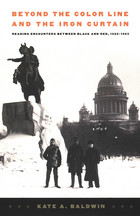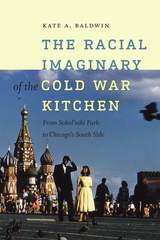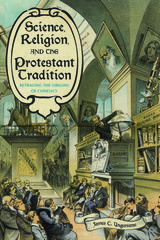2 books by Baldwin, Kate A.

Beyond the Color Line and the Iron Curtain
Reading Encounters between Black and Red, 1922-1963
Kate A. Baldwin
Duke University Press, 2002
Examining the significant influence of the Soviet Union on the work of four major African American authors—and on twentieth-century American debates about race—Beyond the Color Line and the Iron Curtain remaps black modernism, revealing the importance of the Soviet experience in the formation of a black transnationalism.
Langston Hughes, W. E. B. Du Bois, Claude McKay, and Paul Robeson each lived or traveled extensively in the Soviet Union between the 1920s and the 1960s, and each reflected on Communism and Soviet life in works that have been largely unavailable, overlooked, or understudied. Kate A. Baldwin takes up these writings, as well as considerable material from Soviet sources—including articles in Pravda and Ogonek, political cartoons, Russian translations of unpublished manuscripts now lost, and mistranslations of major texts—to consider how these writers influenced and were influenced by both Soviet and American culture. Her work demonstrates how the construction of a new Soviet citizen attracted African Americans to the Soviet Union, where they could explore a national identity putatively free of class, gender, and racial biases. While Hughes and McKay later renounced their affiliations with the Soviet Union, Baldwin shows how, in different ways, both Hughes and McKay, as well as Du Bois and Robeson, used their encounters with the U. S. S. R. and Soviet models to rethink the exclusionary practices of citizenship and national belonging in the United States, and to move toward an internationalism that was a dynamic mix of antiracism, anticolonialism, social democracy, and international socialism.
Recovering what Baldwin terms the "Soviet archive of Black America," this book forces a rereading of some of the most important African American writers and of the transnational circuits of black modernism.
Langston Hughes, W. E. B. Du Bois, Claude McKay, and Paul Robeson each lived or traveled extensively in the Soviet Union between the 1920s and the 1960s, and each reflected on Communism and Soviet life in works that have been largely unavailable, overlooked, or understudied. Kate A. Baldwin takes up these writings, as well as considerable material from Soviet sources—including articles in Pravda and Ogonek, political cartoons, Russian translations of unpublished manuscripts now lost, and mistranslations of major texts—to consider how these writers influenced and were influenced by both Soviet and American culture. Her work demonstrates how the construction of a new Soviet citizen attracted African Americans to the Soviet Union, where they could explore a national identity putatively free of class, gender, and racial biases. While Hughes and McKay later renounced their affiliations with the Soviet Union, Baldwin shows how, in different ways, both Hughes and McKay, as well as Du Bois and Robeson, used their encounters with the U. S. S. R. and Soviet models to rethink the exclusionary practices of citizenship and national belonging in the United States, and to move toward an internationalism that was a dynamic mix of antiracism, anticolonialism, social democracy, and international socialism.
Recovering what Baldwin terms the "Soviet archive of Black America," this book forces a rereading of some of the most important African American writers and of the transnational circuits of black modernism.
[more]

The Racial Imaginary of the Cold War Kitchen
From Sokol’niki Park to Chicago’s South Side
Kate A. Baldwin
Dartmouth College Press, 2016
This book demonstrates the ways in which the kitchen—the centerpiece of domesticity and consumerism—was deployed as a recurring motif in the ideological and propaganda battles of the Cold War. Beginning with the famous Nixon–Khrushchev kitchen debate, Baldwin shows how Nixon turned the kitchen into a space of exception, while contemporary writers, artists, and activists depicted it as a site of cultural resistance. Focusing on a wide variety of literature and media from the United States and the Soviet Union, Baldwin reveals how the binary logic at work in Nixon’s discourse—setting U.S. freedom against Soviet totalitarianism—erased the histories of slavery, gender subordination, colonialism, and racial genocide. The Racial Imaginary of the Cold War Kitchen treats the kitchen as symptomatic of these erasures, connecting issues of race, gender, and social difference across national boundaries. This rich and rewarding study—embracing the literature, film, and photography of the era—will appeal to a broad spectrum of scholars.
[more]
READERS
Browse our collection.
PUBLISHERS
See BiblioVault's publisher services.
STUDENT SERVICES
Files for college accessibility offices.
UChicago Accessibility Resources
home | accessibility | search | about | contact us
BiblioVault ® 2001 - 2024
The University of Chicago Press









